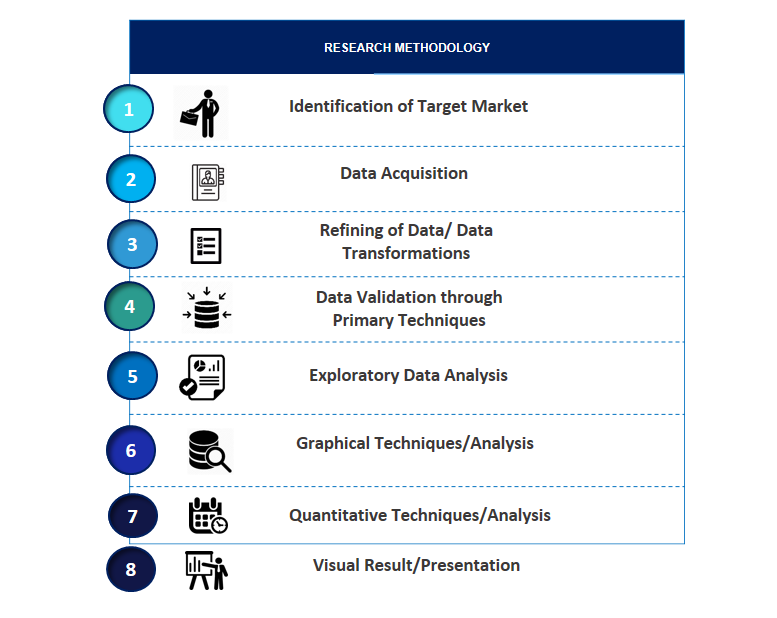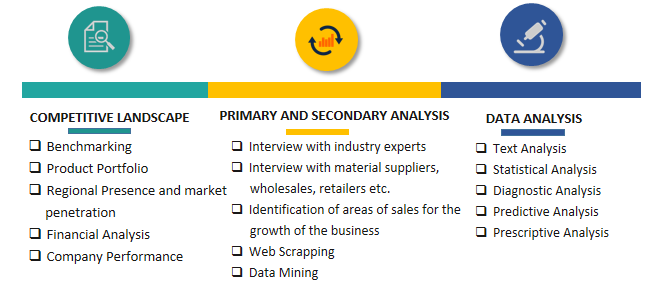North America Rainwater Harvesting Market Introduction and Overview
According to SPER Market Research, the North America Rainwater Harvesting Market is estimated to reach USD 567.17 million by 2033 with a CAGR of 3.65%.
The report includes an in-depth analysis of the North America Rainwater Harvesting Market, including market size and trends, product mix, applications, and supplier analysis. Rainwater harvesting is the process of collecting rainwater from surfaces on which it falls, purifying it, and storing it for future use. Rainwater gathering helps to restore the availability of water to normal levels. It is becoming a feasible alternative for supplying water to our homes and businesses. The best feature of rainwater is that it is free of pollutants, salts, minerals, and other natural and man-made impurities. Harvesting rainwater makes better use of an energy resource.
- Watts Water Technologies financed the installation of an integrated water system in March 2021 to provide clean water to people of a Vietnamese community. Watts Water and the Planet Water Foundation have teamed up to provide potable water to the affected area.
- In August 2020, Kingspan's Rokietnica facility in Poland installed rainwater collection. Up to this point, the team has finished installing a large 20,000-liter rainwater collection tank. By establishing rainwater collection systems, the corporation hopes to gather a remarkable 100 million litres of rainwater by 2030, demonstrating a strong commitment to responsible water resource management and a greener, more sustainable future.
Market Opportunities and Challenges
Opportunities- The rainwater harvesting business in North America is now being driven by a few components. Rainwater harvesting system demand in the area has been driven by its simple installation and customisation procedure. This is supported by the fact that these systems are far less expensive to build and run overall than water filtration or pumping systems. Rainwater collection thus becomes a cost-effective method of water conservation. In addition, the region's water demand is rising as a result of the population growth. Moreover, collecting rainwater helps alleviate worries about groundwater depletion and water scarcity by decreasing reliance on groundwater. Additionally, rainwater can be collected and used for a variety of tasks, such as washing, rinsing vegetables, composting, watering plants, and flushing toilets.
Challenges-
"Insufficient Infrastructure and Consumers' Lack of Product Understanding" The functionality of a rainwater harvesting system is dependent on the amount of precipitation in an area. Rainfall patterns have become more erratic due to global warming, and occasionally there is just not enough water for the systems to function. Additionally, there is a lack of effective consumer education regarding the advantages and requirements of rainwater harvesting systems, which hinders their widespread adoption. Furthermore, it is not common to find the resources needed to set up rainwater harvesting systems. This issue is particularly prevalent in developing nations when there is a shortage of water. For this reason, the market faces a number of challenges.
Market Competitive Landscape
The competitive landscape analysis of the Rainwater Harvesting System market is primarily concerned with expanding the global growth of Rainwater Harvesting System through new product innovation, business expansion, and the increasing presence of a variety of manufacturers operating in Rainwater Harvesting System, which has resulted in increased market demand. Furthermore, the market provides a diverse selection of products for various end-users to meet customer demand, which contributes to the industry's continued expansion. Leading companies in the industry are Watts Water Technologies, Inc, Roth North America, Bushman, The Water Harvesting Solutions (Wahaso), The RainCatcher Inc, Others.
Scope of the Report:
| Report Metric | Details |
| Market size available for years | 2020-2033 |
| Base year considered | 2023 |
| Forecast period | 2024-2033 |
| Segments covered | By Harvesting Method, By End-User
|
| Regions covered | Canada, Mexico United States, Cuba, Panama, Greenland, Rest of North America
|
| Companies Covered | Watts Water Technologies, Inc, Roth North America, Bushman, The Water Harvesting Solutions (Wahaso), The RainCatcher Inc.
|
COVID-19 Impact on North America Rainwater Harvesting Market
COVID-19 is an unprecedented global public health disaster that has touched practically every industry, with long-term consequences expected to impact industrial growth during the forecast period. Furthermore, a comprehensive analysis of changes in Global Rainwater Harvesting System Market spending, as well as economic and international policies affecting supply and demand. The paper also looks at how the pandemic has affected global economies, international trade, company investments, GDP, and the marketing tactics of important market competitors. Furthermore, the pandemic has enhanced the importance and visibility of the WASH sector in countries. Such elements are expected to generate income opportunities for stakeholders in the rainwater harvesting sector following the COVID-19 pandemic.
Key Target Audience:
- Residential Homeowners
- Commercial Property Owners
- Agricultural Farmers
- Government Agencies
- Educational Institutions
- Industrial Facilities
- Landscape Designers and Contractors
- Environmental Organizations
- Real Estate Developers
- Rainwater Harvesting System Manufacturers and Suppliers
Our in-depth analysis of the North America Rainwater Harvesting Market includes the following segments:
|
By Harvesting Method:
|
Above Ground
Underground
|
|
By End-User:
|
Commercial
Residential
Industrial
|
Key Topics Covered in the Report:
- North America Rainwater Harvesting Market Size (FY’2024-FY’2033)
- Overview of North America Rainwater Harvesting Market
- Segmentation of North America Rainwater Harvesting by Harvesting Method (Above Ground, Underground)
- Segmentation of North America Rainwater Harvesting Market by End User (Commercial, Residential, Industrial)
- Statistical Snap of North America Rainwater Harvesting Market
- Expansion Analysis of North America Rainwater Harvesting Market
- Problems and Obstacles in North America Rainwater Harvesting Market
- Competitive Landscape in the North America Rainwater Harvesting Market
- Impact of COVID-19 and Demonetization on North America Rainwater Harvesting Market
- Details on Current Investment in North America Rainwater Harvesting Market
- Competitive Analysis of North America Rainwater Harvesting Market
- Prominent Players in the North America Rainwater Harvesting Market
- SWOT Analysis of North America Rainwater Harvesting Market
- North America Rainwater Harvesting Market Future Outlook and Projections (FY’2024-FY’2033)
- Recommendations from Analyst
1. Introduction
1.1. Scope of the report
1.2. Market segment analysis
2. Research Methodology
2.1. Research data source
2.1.1. Secondary Data
2.1.2. Primary Data
2.1.3. SPER’s internal database
2.1.4. Premium insight from KOL’s
2.2. Market size estimation
2.2.1. Top-down and Bottom-up approach
2.3. Data triangulation
3. Executive Summary
4. Market Dynamics
4.1. Driver, Restraint, Opportunity and Challenges analysis
4.1.1. Drivers
4.1.2. Restraints
4.1.3. Opportunities
4.1.4. Challenges
4.2. COVID-19 Impacts of the North America Rainwater Harvesting Market.
5. Market variable and outlook
5.1. SWOT Analysis
5.1.1. Strengths
5.1.2. Weaknesses
5.1.3. Opportunities
5.1.4. Threats
5.2. PESTEL Analysis
5.2.1. Political Landscape
5.2.2. Economic Landscape
5.2.3. Social Landscape
5.2.4. Technological Landscape
5.2.5. Environmental Landscape
5.2.6. Legal Landscape
5.3. PORTER’s Five Forces
5.3.1. Bargaining power of suppliers
5.3.2. Bargaining power of buyers
5.3.3. Threat of Substitute
5.3.4. Threat of new entrant
5.3.5. Competitive rivalry
5.4. Heat Map Analysis
6. Competitive Landscape
6.1. North America Rainwater Harvesting Market Manufacturing Base Distribution, Sales Area, Product Type
6.2. Mergers & Acquisitions, Partnerships, Product Launch, and Collaboration in North America Rainwater Harvesting Market
7. North America Rainwater Harvesting Market, By Harvesting Method (USD Million) 2020-2033
7.1. North America Rainwater Harvesting Market Size, Share and Forecast, By Harvesting Method, 2020-2026
7.2. North America Rainwater Harvesting Market Size, Share and Forecast, By Harvesting Method, 2027-2033
7.3. Above Ground
7.4. Underground
8. North America Rainwater Harvesting Market, By End-User (USD Million) 2020-2033
8.1. North America Rainwater Harvesting Market Size, Share and Forecast, By End-User, 2020-2026
8.2. North America Rainwater Harvesting Market Size, Share and Forecast, By End-User, 2027-2033
8.3. Commercial
8.4. Residential
8.5. Industrial
9. North America Rainwater Harvesting Market Forecast, 2020-2033 (USD Million)
9.1. North America Rainwater Harvesting Market Size and Market Share
10. North America Rainwater Harvesting Market, By Region, 2020-2033 (USD Million)
10.1. North America Rainwater Harvesting Market Size and Market Share By Region (2020-2026)
10.2. North America Rainwater Harvesting Market Size and Market Share By Region (2027-2033)
10.3. North America
10.3.1. Canada
10.3.2. Mexico
10.3.3. United States
10.3.4. Cuba
10.3.5. Panama
10.3.6. Greenland
10.3.7. Rest of North America
11. Company Profile
11.1. Watts Water Technologies, Inc
11.1.1. Company details
11.1.2. Financial outlook
11.1.3. Product summary
11.1.4. Recent developments
11.2. Roth North America
11.2.1. Company details
11.2.2. Financial outlook
11.2.3. Product summary
11.2.4. Recent developments
11.3. Bushman
11.3.1. Company details
11.3.2. Financial outlook
11.3.3. Product summary
11.3.4. Recent developments
11.4. The Water Harvesting Solutions (Wahaso)
11.4.1. Company details
11.4.2. Financial outlook
11.4.3. Product summary
11.4.4. Recent developments
11.5. The RainCatcher Inc
11.5.1. Company details
11.5.2. Financial outlook
11.5.3. Product summary
11.5.4. Recent developments
11.6. Others
12. Conclusion
13. List of Abbreviations
14. Reference Links
SPER Market Research’s methodology uses great emphasis on primary research to ensure that the market intelligence insights are up to date, reliable and accurate. Primary interviews are done with players involved in each phase of a supply chain to analyze the market forecasting. The secondary research method is used to help you fully understand how the future markets and the spending patterns look likes.
The report is based on in-depth qualitative and quantitative analysis of the Product Market. The quantitative analysis involves the application of various projection and sampling techniques. The qualitative analysis involves primary interviews, surveys, and vendor briefings. The data gathered as a result of these processes are validated through experts opinion. Our research methodology entails an ideal mixture of primary and secondary initiatives.


